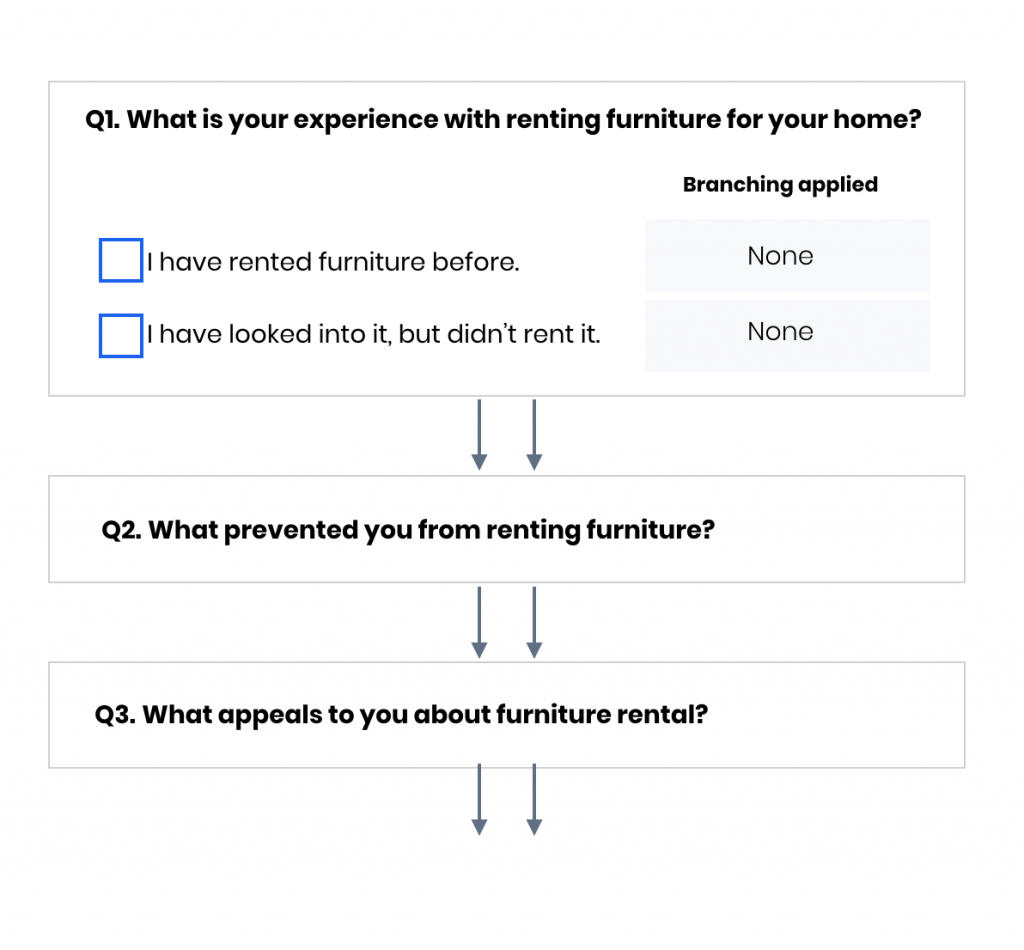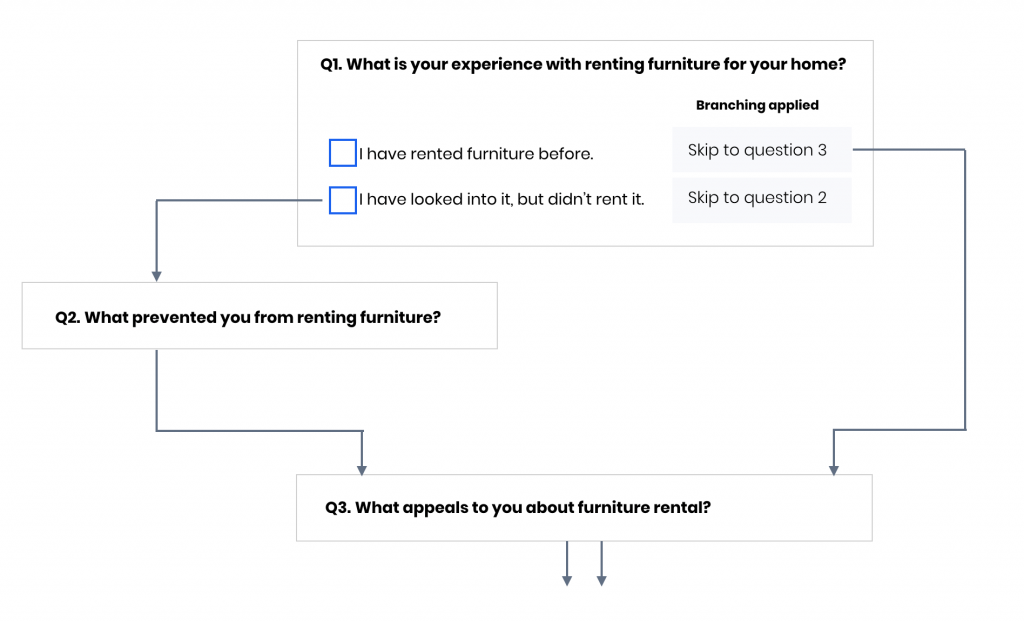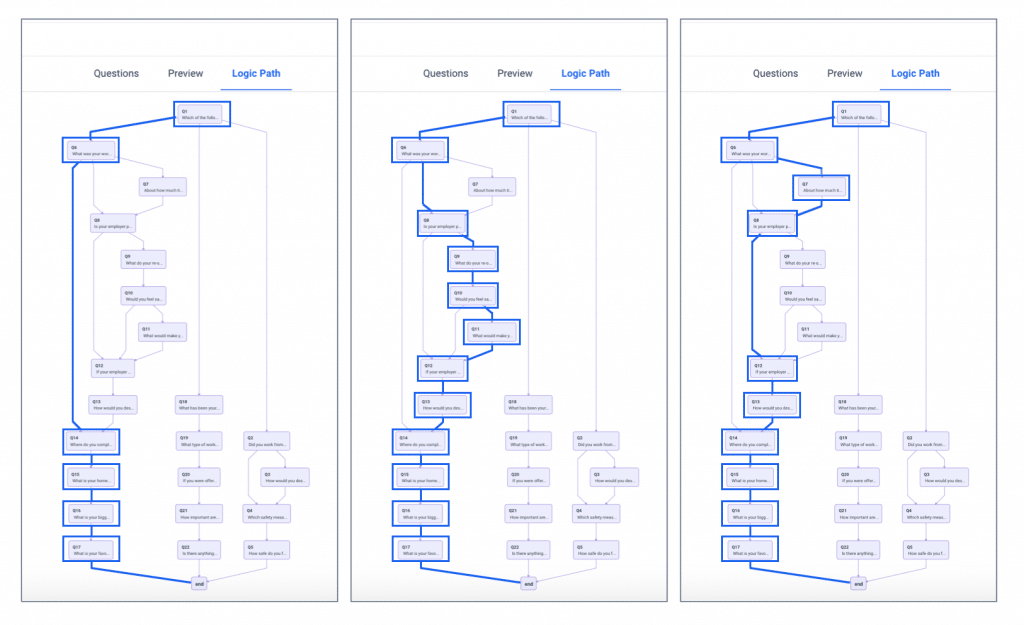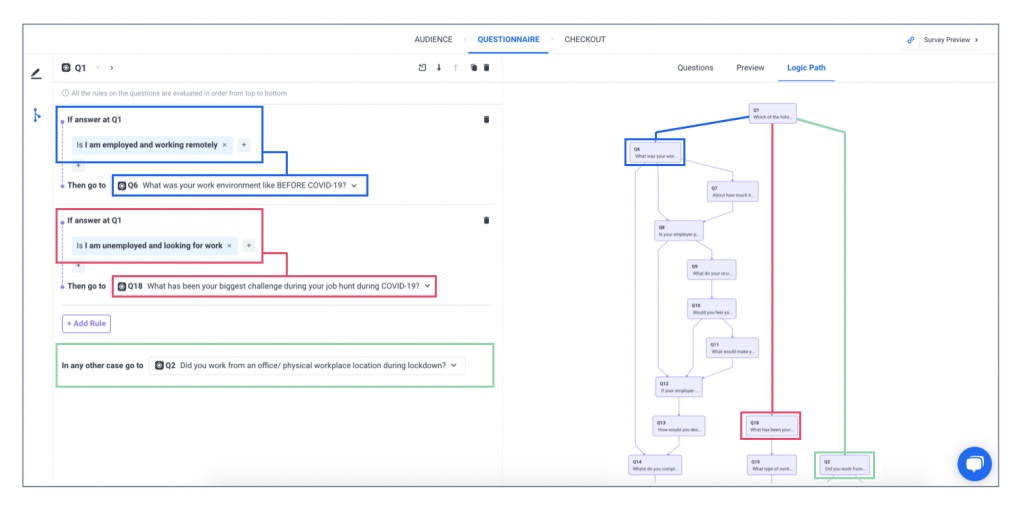How to apply advanced skip logic with Pollfish
Advanced skip logic is a powerful feature that allows researchers to add layers to their questionnaire and go more in-depth with respondents who are the best fit for those questions.
New updates to advanced skip logic mean that instead of skipping a question or two, respondents can be directed towards a completely different sequence of questions within the same survey.
Standard questionnaire sequence
Before starting on skip logic, it’s important to understand how it differs from a standard questionnaire. In a standard questionnaire, the respondent will complete all the questions asked in the order in which they are presented. If skip logic isn’t enabled, respondents will go through the regular sequence.

Skip Logic Sequence
Skip logic sequencing involves “branching”, which allows you to channel respondents towards different questions based on the responses they have already given. For example, if a respondent says that they have completed an action, you can allow them to skip a question that asks them to explain why they didn’t complete it.
We’ve recently augmented our skip logic, so it now features more advanced capabilities.

Advanced Skip Logic Sequence
Much like a standard skip logic sequence, advanced skip logic channels respondents into different questionnaire sequences based upon the answers they have already given. However, advanced skip logic offers multiple layers of branching to create a series of question paths that offer more in-depth data for researchers.
That is to say that with advanced skip logic, the system will automate respondents to jump onto a specific question based on their answer or answers (if it’s multiple-selection). The advanced skip logic iteration can be used on any question type.
As such, respondents will only be presented with questions according to what they’ve already selected, so as to not receive every question in the questionnaire or necessarily be aware of the complexities of the survey. Instead, they will only see the questions most relevant to them.
 A question path is the sequence of questions a single respondent will take in a survey.
A question path is the sequence of questions a single respondent will take in a survey.
Advanced skip logic might look a bit intimidating, but is one of the most specialized and valuable features on the Pollfish platform.
Applying advanced skip logic on Pollfish
Applied logic involves the previous questions and answers used in the survey. You can also put combined logic into action, using any answer the respondent had already answered.
On the Pollfish platform, you can create this sequence yourself in your questionnaire builder. Log into your account and create or select the survey you wish to apply logic to.
When you’re ready to add your questions, you’ll see the ‘branching’ icon on the left that lets you toggle between your standard questionnaire and skip logic views. From there you can select which question the respondent will skip to based on their responses.
In skip logic view, you can add “rules” to questions on the left and preview the logic path on the right. Rules follow if/then logic, meaning that if one thing is chosen, another thing will occur. For example, IF a respondent chooses that they are “employed and working remotely”, THEN they will be fast-tracked to Question 6.

Like all surveys, it’s best to keep your research goals in mind when creating your questionnaire and to start in a document where you can easily edit your questions. Although you can always edit and reorder them in Pollfish, particularly large or complicated surveys (such as those using multi-layered skip logic) can be easier to visualize on paper first.
Max Questionnaire Path
With advanced skip logic applied, surveys can become quite long on the backend, but respondents won’t be presented with every question. In mobile surveys, long questionnaires are at risk of low completion rates due to boredom and frustration, so we limit the number of questions a single respondent can be presented with.
The Max Questionnaire path is the maximum number of questions a respondent could possibly be presented with if they were to choose all of the possible variants in a series of questions. As a mobile-first survey tool, we uphold the respondent experience by allowing no more than 50 questions in the Max Questionnaire path.
Advanced skip logic is now available on all question types, including for ranking and matrix questions. It cannot be applied when grouping and randomization is enabled.
If you still have questions, check out our video to get a walkthrough of this great feature, or if you have additional questions about using or implementing advanced skip logic, our 24/7 support team is always here to help out.
Ally
Ready to Try Pollfish?
Create your survey with AI, target high-quality respondents starting at $0.95 per complete, and start getting results in just minutes in real-time. From running a simple product concept survey to managing a constant stream of trackers for dozens of clients in dozens of countries, we’ve got you.

